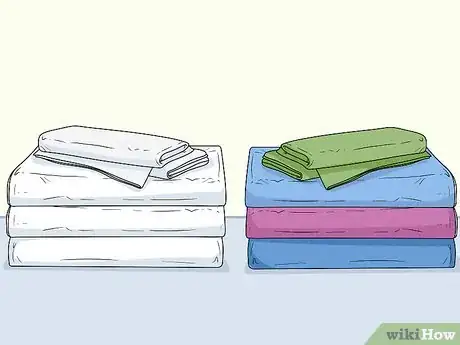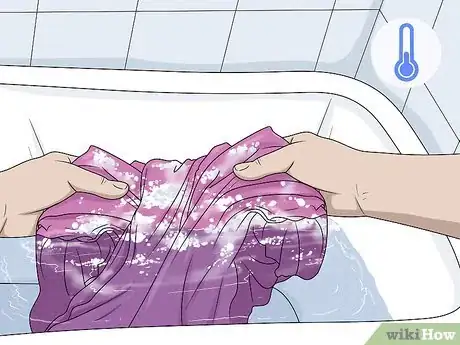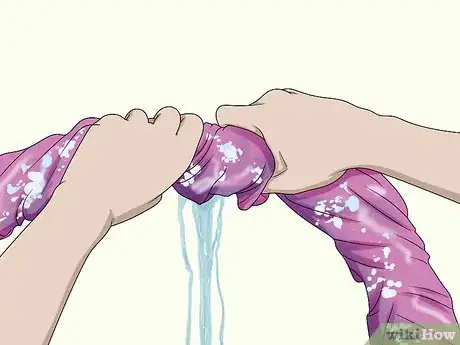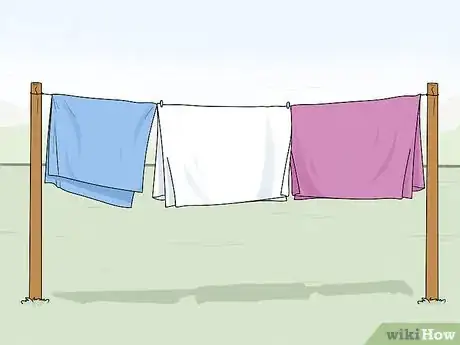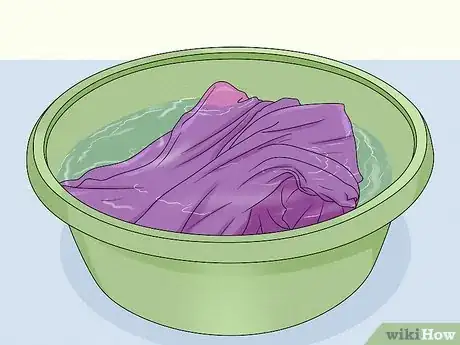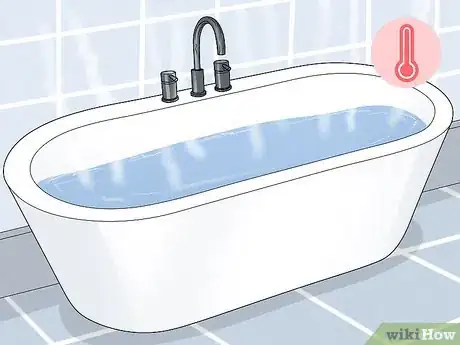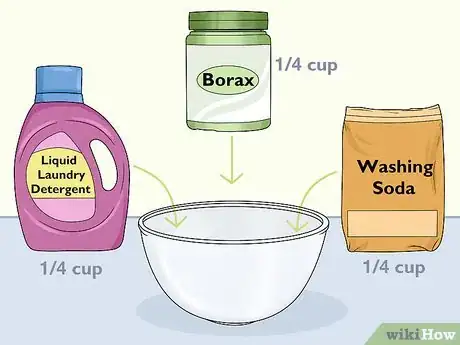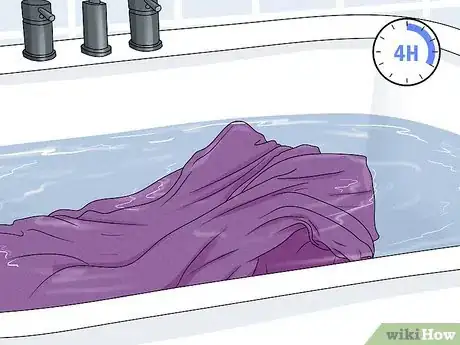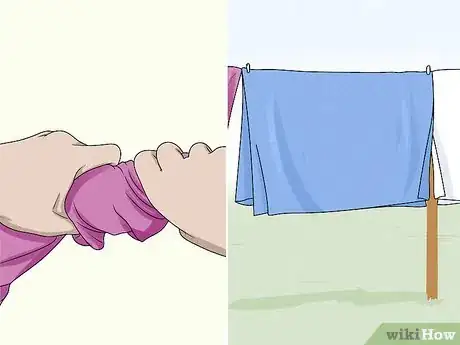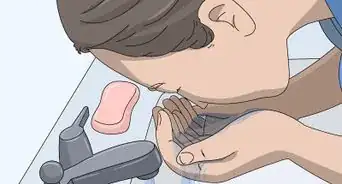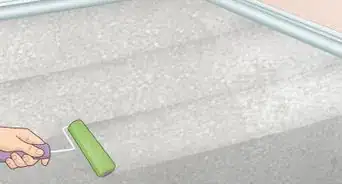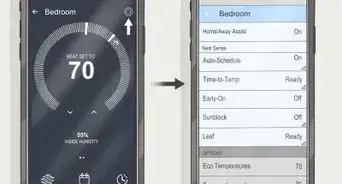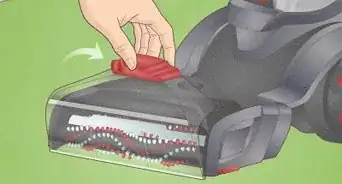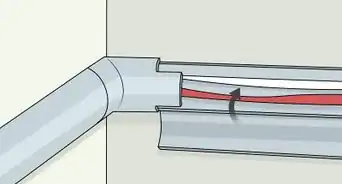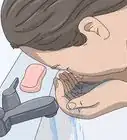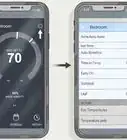This article was co-authored by wikiHow staff writer, Jennifer Mueller, JD. Jennifer Mueller is a wikiHow Content Creator. She specializes in reviewing, fact-checking, and evaluating wikiHow's content to ensure thoroughness and accuracy. Jennifer holds a JD from Indiana University Maurer School of Law in 2006.
There are 8 references cited in this article, which can be found at the bottom of the page.
This article has been viewed 13,679 times.
Learn more...
Bedsheets typically need to be washed at least once every couple of weeks, which can be difficult if you find yourself without access to a washing machine. Like anything else, you can also hand-wash your sheets, although it will take a little longer and require a little more effort from you than simply tossing them into a washing machine.[1] If you really want to make sure your sheets are clean, after washing them, put them through the stripping process to remove built-up detergent and fabric softener residue and have them looking like new.[2]
Steps
Washing Your Sheets by Hand
-
1Separate your sheets by color and fabric. If you're washing more than one set of sheets, do white or pastel sheets first, then do dark or colored sheets separately. If you're using a standard-sized bathtub, you can wash a full set of sheets, including pillowcases, all at once.[3]
- If you have silk or satin sheets, wash them separately from cloth sheets.[4]
-
2Clean your bathtub and fill it with water. Check the labels on your sheets to determine what temperature water you should use to wash them. Generally, white or pastel-colored sheets can be washed in hot water, while dark or colored sheets should be washed in cold water to prevent the dyes from running or fading.[5]
- Silk sheets typically must be washed in cold water, regardless of the color.[6]
- Make sure your tub is clean before you add water to wash your sheets. Any dirt or impurities in your tub could be absorbed by the sheets during the washing process.
Advertisement -
3Add 1 teaspoon (4.9 mL) of detergent per sheet. You can use regular liquid laundry detergent to hand-wash your sheets. You don't need a special mild hand-washing detergent, but if you have it, the bottle may have more specific instructions on how much to use. Swirl the detergent around in the water until it's well mixed.[7]
- If you're washing heavier flannel sheets, you might want to add more detergent. However, always err on the side of less detergent. If you add too much, it will take a long time to rinse out and may leave residue behind that irritates your skin.
- Liquid detergent is usually the easiest to use, but you can use powdered detergent as well. Make sure it's fully dissolved in the water before you put your sheets in.
-
4Submerge your sheets and soak them for at least a half-hour. Drop your sheets into the water and swirl them around until they're thoroughly wet and completely submerged. Generally, a simple soak will do the job of cleaning them, but you might also want to come back and swirl them around every few minutes just to make sure they're completely clean.[8]
- If your sheets are particularly soiled or haven't been washed in a while, you might even want to leave them soaking overnight.
-
5Rinse your sheets with cool water. Drain the water from the tub and run fresh cold water. You can hold the sheets under the tap so the water flows through them to rinse them better. If you have a detachable showerhead, that can help you rinse more quickly as well.[9]
- It might take several rinses to get all of the soap out of your sheets. You'll know they're completely rinsed when they no longer smell like soap.
-
6Squeeze excess water out of your sheets. Press your sheets against the side of the tub to help get the excess water out. You can also squeeze them together or wring them out, though this isn't advisable if you have more delicate sheets, such as those made of silk.[10]
- Pressing a towel against the sheets also helps. Getting rid of as much water as possible will help your sheets air-dry faster.
-
7Hang or drape your sheets somewhere to air dry. If you don't have a clothesline to hang your sheets outside, you can drape them over the shower rod or across the backs of 2 chairs. Make sure they're off the floor and there's room for air to flow around and through them.[11]
- If you have darker colored sheets, avoid hanging them in the sun. They could fade as they dry.
Stripping Your Sheets
-
1Wash your sheets by hand before stripping them. Strip washing removes residue built-up from detergents and fabric softeners, not surface dirt. However, there's no need to wait for your sheets to dry — you can strip them while they're still wet after being freshly washed.[12]
- The stripping process is especially helpful if you make your own laundry detergent, which can leave a lot more residue than commercial detergents.
- Make sure you have sheets that are appropriate to strip wash. Stripping can cause dyes to run, so you likely don't want to strip wash dark or brightly colored sheets.[13]
-
2Fill your tub with hot water. Your water doesn't have to be boiling, but it should be the hottest water you can get from your tap. Fill your tub, leaving enough room to put your sheets in without overflowing it.[14]
- You also want to have enough room to stir things around in the tub without the water sloshing out if you don't want to make a mess of your bathroom.
-
3Measure your stripping solution. Use a stripping solution made of Borax, washing soda (sodium carbonate), and laundry detergent that follows a 1 to 1 to 2 ratio. For a standard-sized bathtub, you'll need 1/4 cup Borax, 1/4 cup washing soda, and 1/4 cup laundry detergent. For best results, use a powdered detergent, which will mix better with the Borax and the washing soda.[15]
- Note that washing soda is different from baking soda, which is sodium bicarbonate. To turn baking soda into washing soda, spread a layer of baking soda on a cookie sheet and bake it at 400 °F (204 °C) for 30 minutes to an hour. The heat evaporates the water and carbon dioxide in baking soda, leaving you with washing soda.[16]
-
4Dissolve your stripping solution in the hot water. Pour your stripping solution into the water slowly and stir it until it's dissolved. You can use a long-handled spoon to stir, although if you've got something larger you could use, it might dissolve more quickly.[17]
- For example, you could use a dustpan, a spatula, or even an oar. Just make sure whatever you use to stir the solution in the water is clean.
-
5Submerge your sheets in the water and soak for at least 4 hours. Drop your sheets into the hot water carefully. Use whatever you used to dissolve the stripping solution to stir the sheets around so you can make sure they're completely soaked.[18]
- You can also stir the sheets around with your hands if you have rubber gloves to protect your hands from the heat.
- Check on your sheets periodically to observe the progress. The water will become dirty and dingy, revealing all the dirt and impurities that are being stripped out of your sheets.
-
6Drain the water and rinse your sheets. Pull the plug on your tub to drain the water completely, then run fresh cold water over the sheets to rinse them. Use the tap or shower head for rinsing. If you have a detachable showerhead, that might make the process more efficient.[19]
- It will likely take 4 or 5 full rinses to get everything out of your sheets. You'll know they're completely rinsed when the water that's running off of them is completely clear.
-
7Wring out your sheets and hang them up to dry. Press your sheets against the side of the tub to squeeze out the excess water. While this can be difficult with something as large as sheets, they'll dry more quickly if they aren't dripping wet.[20]
- If you have a clothesline outside, hang your sheets there to dry. Otherwise, you can use your shower rod, a balcony or porch railing, or drape the sheets across the backs of chairs. Just make sure whatever you hang your sheets on is clean or you'll ruin all your hard work.
Warnings
- If you've had a contagious illness, wash your sheets as soon as you feel better to prevent reinfection.[22]⧼thumbs_response⧽
Things You'll Need
Stripping Your Sheets
- Borax
- Washing powder (sodium carbonate)
- Powdered laundry detergent
References
- ↑ https://www.nytimes.com/2020/04/16/style/how-to-handwash-your-clothes.html
- ↑ https://www.littlethings.com/stripping-sheets
- ↑ https://www.sierraclub.org/sierra/step-step-guide-washing-your-clothes-hand
- ↑ http://lovasilk.com/guide-to-silk-bedding/myths-about-silk-sheets/
- ↑ https://www.nytimes.com/2020/04/16/style/how-to-handwash-your-clothes.html
- ↑ http://lovasilk.com/guide-to-silk-bedding/myths-about-silk-sheets/
- ↑ https://www.nytimes.com/2020/04/16/style/how-to-handwash-your-clothes.html
- ↑ https://www.sierraclub.org/sierra/step-step-guide-washing-your-clothes-hand
- ↑ https://www.nytimes.com/2020/04/16/style/how-to-handwash-your-clothes.html
- ↑ https://www.nytimes.com/2020/04/16/style/how-to-handwash-your-clothes.html
- ↑ https://www.sierraclub.org/sierra/step-step-guide-washing-your-clothes-hand
- ↑ https://www.littlethings.com/stripping-sheets
- ↑ https://www.realsimple.com/home-organizing/cleaning/laundry/what-is-laundry-stripping
- ↑ https://www.realsimple.com/home-organizing/cleaning/laundry/what-is-laundry-stripping
- ↑ https://www.realsimple.com/home-organizing/cleaning/laundry/what-is-laundry-stripping
- ↑ https://sciencenotes.org/turn-baking-soda-washing-soda/
- ↑ https://www.bhg.com/homekeeping/laundry-linens/tips-checklists/laundry-stripping/
- ↑ https://www.bhg.com/homekeeping/laundry-linens/tips-checklists/laundry-stripping/
- ↑ https://www.bhg.com/homekeeping/laundry-linens/tips-checklists/laundry-stripping/
- ↑ https://www.sierraclub.org/sierra/step-step-guide-washing-your-clothes-hand
- ↑ https://www.sleepadvisor.org/how-often-should-you-wash-your-sheets/
- ↑ https://www.sleepadvisor.org/how-often-should-you-wash-your-sheets/
